Deck 7: The Skeleton
Question
Question
Question
Question
Question
Question
Question
Question
Question
Question
Question
Question
Question
Question
Question
Question
Question
Question
Question
Question
Question
Question
Question
Question
Question
Question
Question
Question
Question
Question
Question
Question
Question
Question
Question
Question
Question
Question
Question
Question
Question
Question
Question
Question
Question
Question
Question
Question
Question
Question
Question
Question
Question
Question
Question
Question
Question
Question
Question
Question
Question
Question
Question
Question
Question
Question
Question
Question
Question
Question
Question
Question
Question
Question
Question
Question
Question
Question
Question
Question

Unlock Deck
Sign up to unlock the cards in this deck!
Unlock Deck
Unlock Deck
1/102
Play
Full screen (f)
Deck 7: The Skeleton
1
The hyoid bone is unique because it .
A) is the only irregular bone found in the neck
B) is composed of three bones joined together
C) is the only bone formed by the fusion of right and left halves
D) is the only bone of the body that does not articulate with any other bone
A) is the only irregular bone found in the neck
B) is composed of three bones joined together
C) is the only bone formed by the fusion of right and left halves
D) is the only bone of the body that does not articulate with any other bone
D
2
The antebrachium is composed of which of the following two bones?
A) the radius and the ulna
B) the humerus and the radius
C) the scapula and the clavicle
D) the humerus and the clavicle
A) the radius and the ulna
B) the humerus and the radius
C) the scapula and the clavicle
D) the humerus and the clavicle
A
3
Which bone contains areas of diaphysis and epiphysis areas, a tuberosity near its middle, and is proportionally more compact than spongy bone?
A) cervical vertebra
B) talus
C) parietal bone
D) humerus
A) cervical vertebra
B) talus
C) parietal bone
D) humerus
D
4
What makes up the axial skeleton?
A) the skull, vertebral column, and rib cage
B) the skull, vertebral column, and pelvis
C) arms, legs, hands, and feet
D) shoulder and pelvic girdles
A) the skull, vertebral column, and rib cage
B) the skull, vertebral column, and pelvis
C) arms, legs, hands, and feet
D) shoulder and pelvic girdles

Unlock Deck
Unlock for access to all 102 flashcards in this deck.
Unlock Deck
k this deck
5
Which portion of the fibula articulates with the talus?
A) lateral malleolus
B) head
C) medial malleolus
D) calcaneus
A) lateral malleolus
B) head
C) medial malleolus
D) calcaneus

Unlock Deck
Unlock for access to all 102 flashcards in this deck.
Unlock Deck
k this deck
6
Which of the following is an abnormal lateral curvature of the vertebral column often seen in the thoracic region?
A) scoliosis
B) swayback
C) lordosis
D) kyphosis
A) scoliosis
B) swayback
C) lordosis
D) kyphosis

Unlock Deck
Unlock for access to all 102 flashcards in this deck.
Unlock Deck
k this deck
7
Which of the following is true about paranasal sinuses?
A) Paranasal sinuses enhance the resonance of the voice and lighten the skull.
B) Paranasal sinuses contain passages acting as one- way valves.
C) Paranasal sinuses are found in maxillary, ethmoid, and lacrimal bones.
D) Paranasal sinuses open into the oral cavity.
A) Paranasal sinuses enhance the resonance of the voice and lighten the skull.
B) Paranasal sinuses contain passages acting as one- way valves.
C) Paranasal sinuses are found in maxillary, ethmoid, and lacrimal bones.
D) Paranasal sinuses open into the oral cavity.

Unlock Deck
Unlock for access to all 102 flashcards in this deck.
Unlock Deck
k this deck
8
Which forms the largest portion of the coxal bone?
A) pubis
B) ischium
C) ilium
D) pelvic
A) pubis
B) ischium
C) ilium
D) pelvic

Unlock Deck
Unlock for access to all 102 flashcards in this deck.
Unlock Deck
k this deck
9
Which bone is in direct contact with the first metatarsal?
A) medial cuneiform
B) cuboid
C) calcaneus
D) lateral cuneiform
A) medial cuneiform
B) cuboid
C) calcaneus
D) lateral cuneiform

Unlock Deck
Unlock for access to all 102 flashcards in this deck.
Unlock Deck
k this deck
10
The "true wrist" or carpus consists of .
A) the styloid processes of the radius and ulna
B) a group of eight short bones united by ligaments
C) the phalanges
D) the metacarpals
A) the styloid processes of the radius and ulna
B) a group of eight short bones united by ligaments
C) the phalanges
D) the metacarpals

Unlock Deck
Unlock for access to all 102 flashcards in this deck.
Unlock Deck
k this deck
11
Which part of the vertebral column receives the most stress by bearing most of the weight of the body?
A) the sacrum
B) the lumbar region
C) the cervical region
D) the sacral promontory
A) the sacrum
B) the lumbar region
C) the cervical region
D) the sacral promontory

Unlock Deck
Unlock for access to all 102 flashcards in this deck.
Unlock Deck
k this deck
12
Which part of the ethmoid bone forms the superior part of the nasal septum?
A) orbital plate
B) crista galli
C) cribriform plate
D) perpendicular plate
A) orbital plate
B) crista galli
C) cribriform plate
D) perpendicular plate

Unlock Deck
Unlock for access to all 102 flashcards in this deck.
Unlock Deck
k this deck
13
Along with support, the anterior ligament of the vertebral column also acts to _ .
A) hold the discs in place
B) protect the spinal cord
C) prevent hyperextension of the spine
D) hold the spine erect
A) hold the discs in place
B) protect the spinal cord
C) prevent hyperextension of the spine
D) hold the spine erect

Unlock Deck
Unlock for access to all 102 flashcards in this deck.
Unlock Deck
k this deck
14
What is the major function of the axial skeleton?
A) provide an attachment point for muscles that allow movement
B) provide central support for the body and protect internal organs
C) give the body resilience
D) provide a space for the major digestive organs
A) provide an attachment point for muscles that allow movement
B) provide central support for the body and protect internal organs
C) give the body resilience
D) provide a space for the major digestive organs

Unlock Deck
Unlock for access to all 102 flashcards in this deck.
Unlock Deck
k this deck
15
The pituitary gland is housed in the _ _.
A) foramen lacerum
B) sella turcica of the sphenoid bone
C) sinuses of the ethmoid bone
D) vomer
A) foramen lacerum
B) sella turcica of the sphenoid bone
C) sinuses of the ethmoid bone
D) vomer

Unlock Deck
Unlock for access to all 102 flashcards in this deck.
Unlock Deck
k this deck
16
Which of the following is the abnormal curve often seen in pregnant women as they attempt to preserve their center of gravity toward the end of the pregnancy?
A) scoliosis
B) lordosis
C) hunchback
D) kyphosis
A) scoliosis
B) lordosis
C) hunchback
D) kyphosis

Unlock Deck
Unlock for access to all 102 flashcards in this deck.
Unlock Deck
k this deck
17
The articulation that most closely resembles a hinge in the body involves which bones?
A) femur- fibula
B) humerus- radius
C) humerus- ulna
D) femur- tibia
A) femur- fibula
B) humerus- radius
C) humerus- ulna
D) femur- tibia

Unlock Deck
Unlock for access to all 102 flashcards in this deck.
Unlock Deck
k this deck
18
The suture that connects the two parietal bones together is the .
A) squamous
B) coronal
C) sagittal
D) lambdoid
A) squamous
B) coronal
C) sagittal
D) lambdoid

Unlock Deck
Unlock for access to all 102 flashcards in this deck.
Unlock Deck
k this deck
19
How are thoracic vertebrae 11 and 12 different from the other vertebrae?
A) The spinous processes are directed parallel with the centrum.
B) The transverse processes do not have facets that articulate with the tubercles of the ribs.
C) There are two foramina on vertebrae 11 and 12.
D) The orientation of the articular processes is different from all the other thoracic vertebrae.
A) The spinous processes are directed parallel with the centrum.
B) The transverse processes do not have facets that articulate with the tubercles of the ribs.
C) There are two foramina on vertebrae 11 and 12.
D) The orientation of the articular processes is different from all the other thoracic vertebrae.

Unlock Deck
Unlock for access to all 102 flashcards in this deck.
Unlock Deck
k this deck
20
Which bone acts as a moveable base for the tongue?
A) zygomatic bone
B) palatine
C) mandible
D) hyoid bone
A) zygomatic bone
B) palatine
C) mandible
D) hyoid bone

Unlock Deck
Unlock for access to all 102 flashcards in this deck.
Unlock Deck
k this deck
21
Thoracic vertebrae differ from the other vertebrae in that they have .
A) no intervertebral discs
B) no transverse processes
C) transverse foramina
D) costal facets
A) no intervertebral discs
B) no transverse processes
C) transverse foramina
D) costal facets

Unlock Deck
Unlock for access to all 102 flashcards in this deck.
Unlock Deck
k this deck
22
Which of the following bones is not weight bearing?
A) femur
B) talus
C) tibia
D) fibula
A) femur
B) talus
C) tibia
D) fibula

Unlock Deck
Unlock for access to all 102 flashcards in this deck.
Unlock Deck
k this deck
23
The membranous areas between the cranial bones of the fetal skull are called .
A) fontanelles
B) foramina
C) sutures
D) areolas
A) fontanelles
B) foramina
C) sutures
D) areolas

Unlock Deck
Unlock for access to all 102 flashcards in this deck.
Unlock Deck
k this deck
24
What is the major function of the intervertebral discs?
A) absorb shock
B) string the vertebrae together
C) prevent hyperextension
D) prevent hyperextension of the spine
A) absorb shock
B) string the vertebrae together
C) prevent hyperextension
D) prevent hyperextension of the spine

Unlock Deck
Unlock for access to all 102 flashcards in this deck.
Unlock Deck
k this deck
25
Describe the composition of the intervertebral discs.

Unlock Deck
Unlock for access to all 102 flashcards in this deck.
Unlock Deck
k this deck
26
The pelvic girdle does not include the .
A) femur
B) pubis
C) ilium
D) ischium
A) femur
B) pubis
C) ilium
D) ischium

Unlock Deck
Unlock for access to all 102 flashcards in this deck.
Unlock Deck
k this deck
27
Paranasal sinuses are found in which of these facial bones?
A) zygomatic bones
B) maxillae
C) vomer
D) nasal conchae
A) zygomatic bones
B) maxillae
C) vomer
D) nasal conchae

Unlock Deck
Unlock for access to all 102 flashcards in this deck.
Unlock Deck
k this deck
28
Which of the following phrases best describes the function of the vertebral curves?
A) to accommodate muscle attachment
B) to provide resilience and flexibility
C) to improve cervical center of gravity
D) to accommodate the weight of the pelvic girdle
A) to accommodate muscle attachment
B) to provide resilience and flexibility
C) to improve cervical center of gravity
D) to accommodate the weight of the pelvic girdle

Unlock Deck
Unlock for access to all 102 flashcards in this deck.
Unlock Deck
k this deck
29
The superior nasal concha is a part of which bone?
A) maxilla
B) ethmoid
C) vomer
D) sphenoid
A) maxilla
B) ethmoid
C) vomer
D) sphenoid

Unlock Deck
Unlock for access to all 102 flashcards in this deck.
Unlock Deck
k this deck
30
The largest foramen in the body is the foramen.

Unlock Deck
Unlock for access to all 102 flashcards in this deck.
Unlock Deck
k this deck
31
Which vertebra does not have a body?
A) last cervical
B) atlas
C) last lumbar
D) axis
A) last cervical
B) atlas
C) last lumbar
D) axis

Unlock Deck
Unlock for access to all 102 flashcards in this deck.
Unlock Deck
k this deck
32
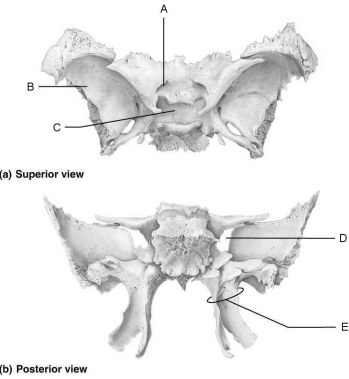 Figure 7.2Using Figure 7.2, match the following:
Figure 7.2Using Figure 7.2, match the following:Passageway for optic nerve.

Unlock Deck
Unlock for access to all 102 flashcards in this deck.
Unlock Deck
k this deck
33
The ethmoid bone is composed of all of the following except the .
A) superior nasal concha
B) cribriform plate
C) crista galli
D) inferior nasal concha
A) superior nasal concha
B) cribriform plate
C) crista galli
D) inferior nasal concha

Unlock Deck
Unlock for access to all 102 flashcards in this deck.
Unlock Deck
k this deck
34
Only the _ vertebrae have transverse foramina.

Unlock Deck
Unlock for access to all 102 flashcards in this deck.
Unlock Deck
k this deck
35
Which bone forms the prominence of the cheek?
A) zygomatic bone
B) palatine bone
C) temporal bone
D) sphenoid bone
A) zygomatic bone
B) palatine bone
C) temporal bone
D) sphenoid bone

Unlock Deck
Unlock for access to all 102 flashcards in this deck.
Unlock Deck
k this deck
36
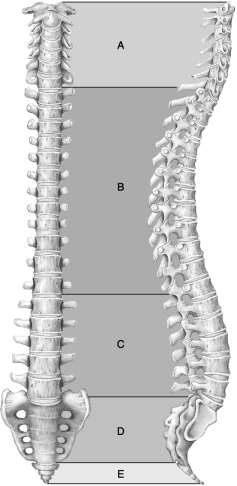 Figure 7.1
Figure 7.1Using Figure 7.1, match the following:
No canals or foramen present.

Unlock Deck
Unlock for access to all 102 flashcards in this deck.
Unlock Deck
k this deck
37
The superior orbital fissure is formed in the sphenoid bone, whereas the inferior orbital fissure is formed between the sphenoid and .
A) maxilla
B) lacrimal
C) palatine
D) ethmoid
A) maxilla
B) lacrimal
C) palatine
D) ethmoid

Unlock Deck
Unlock for access to all 102 flashcards in this deck.
Unlock Deck
k this deck
38
Which of the following is not a movement that can occur between vertebrae?
A) flexion and extension
B) supination
C) lateral flexion
D) rotation
A) flexion and extension
B) supination
C) lateral flexion
D) rotation

Unlock Deck
Unlock for access to all 102 flashcards in this deck.
Unlock Deck
k this deck
39
Which bone is considered to be the keystone of the cranium?

Unlock Deck
Unlock for access to all 102 flashcards in this deck.
Unlock Deck
k this deck
40
 Figure 7.2Using Figure 7.2, match the following:
Figure 7.2Using Figure 7.2, match the following:Encloses hypophysis.

Unlock Deck
Unlock for access to all 102 flashcards in this deck.
Unlock Deck
k this deck
41
The heel bone is called the .

Unlock Deck
Unlock for access to all 102 flashcards in this deck.
Unlock Deck
k this deck
42
 Figure 7.1
Figure 7.1Using Figure 7.1, match the following:
If the hyoid bone is not attached to another bone why is it so important?

Unlock Deck
Unlock for access to all 102 flashcards in this deck.
Unlock Deck
k this deck
43
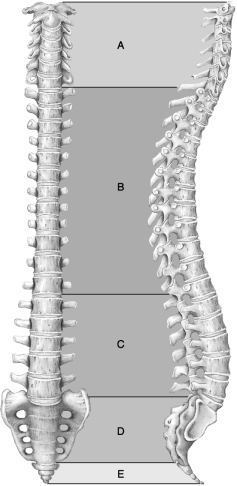 Figure 7.1
Figure 7.1Using Figure 7.1, match the following:
Attach to ribs.

Unlock Deck
Unlock for access to all 102 flashcards in this deck.
Unlock Deck
k this deck
44
Which vertebral curvature abnormality is the most serious? Why?

Unlock Deck
Unlock for access to all 102 flashcards in this deck.
Unlock Deck
k this deck
45
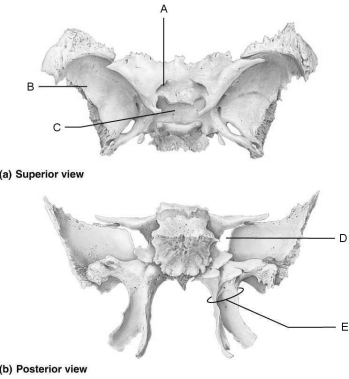 Figure 7.2Using Figure 7.2, match the following:
Figure 7.2Using Figure 7.2, match the following:Forms parts of the middle cranial fossa, dorsal walls of the orbits, and external walls of the skull.

Unlock Deck
Unlock for access to all 102 flashcards in this deck.
Unlock Deck
k this deck
46
The is the bone confined to the septum of the nose.

Unlock Deck
Unlock for access to all 102 flashcards in this deck.
Unlock Deck
k this deck
47
How might low back pain be related to poor abdominal muscle tone?

Unlock Deck
Unlock for access to all 102 flashcards in this deck.
Unlock Deck
k this deck
48
The styloid process of the points to the thumb.

Unlock Deck
Unlock for access to all 102 flashcards in this deck.
Unlock Deck
k this deck
49
 Figure 7.1
Figure 7.1Using Figure 7.1, match the following:
The smallest short bone in the hand is the _ .

Unlock Deck
Unlock for access to all 102 flashcards in this deck.
Unlock Deck
k this deck
50
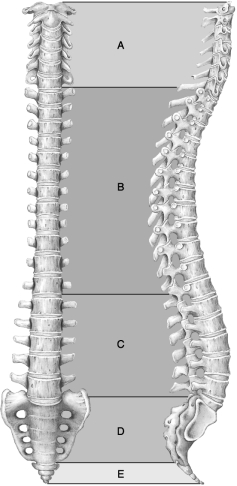 Figure 7.1
Figure 7.1Using Figure 7.1, match the following:
Receive the most stress.

Unlock Deck
Unlock for access to all 102 flashcards in this deck.
Unlock Deck
k this deck
51
What structure is the "missing" body of the second cervical vertebrae?.

Unlock Deck
Unlock for access to all 102 flashcards in this deck.
Unlock Deck
k this deck
52
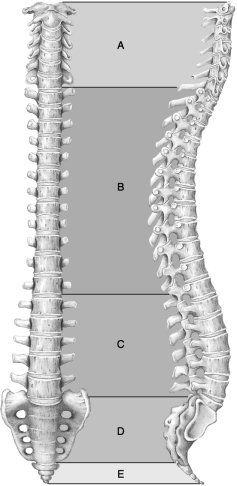 Figure 7.1Using Figure 7.1, match the following:
Figure 7.1Using Figure 7.1, match the following:Articulates with hip bones of the pelvis.

Unlock Deck
Unlock for access to all 102 flashcards in this deck.
Unlock Deck
k this deck
53
How are the pectoral and pelvic girdles structurally different? How is this difference reflected in their functions?

Unlock Deck
Unlock for access to all 102 flashcards in this deck.
Unlock Deck
k this deck
54
Identify the four major cranial sutures in any order and the bones they connect.

Unlock Deck
Unlock for access to all 102 flashcards in this deck.
Unlock Deck
k this deck
55
The medial condyle of the femur articulates with the medial condyle of the .

Unlock Deck
Unlock for access to all 102 flashcards in this deck.
Unlock Deck
k this deck
56
How do the first two cervical vertebrae differ from other cervical vertebrae? What are their functions?

Unlock Deck
Unlock for access to all 102 flashcards in this deck.
Unlock Deck
k this deck
57
What is the purpose of the articular processes of the vertebrae?

Unlock Deck
Unlock for access to all 102 flashcards in this deck.
Unlock Deck
k this deck
58
Describe the differences between the bones of the lower and upper limb and briefly state why these differences exist.

Unlock Deck
Unlock for access to all 102 flashcards in this deck.
Unlock Deck
k this deck
59
The lateral condyle of the femur articulates with the lateral condyle of the _.

Unlock Deck
Unlock for access to all 102 flashcards in this deck.
Unlock Deck
k this deck
60
 Figure 7.1
Figure 7.1Using Figure 7.1, match the following:
Transverse foramina present.

Unlock Deck
Unlock for access to all 102 flashcards in this deck.
Unlock Deck
k this deck
61
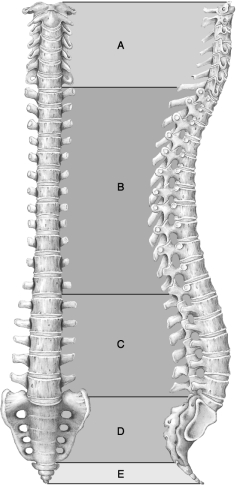 Figure 7.1
Figure 7.1Using Figure 7.1, match the following:
Includes the atlas and the axis.

Unlock Deck
Unlock for access to all 102 flashcards in this deck.
Unlock Deck
k this deck
62
The term vertebrochondral ribs refers to ribs that attach to each other before they attach to the sternum.

Unlock Deck
Unlock for access to all 102 flashcards in this deck.
Unlock Deck
k this deck
63
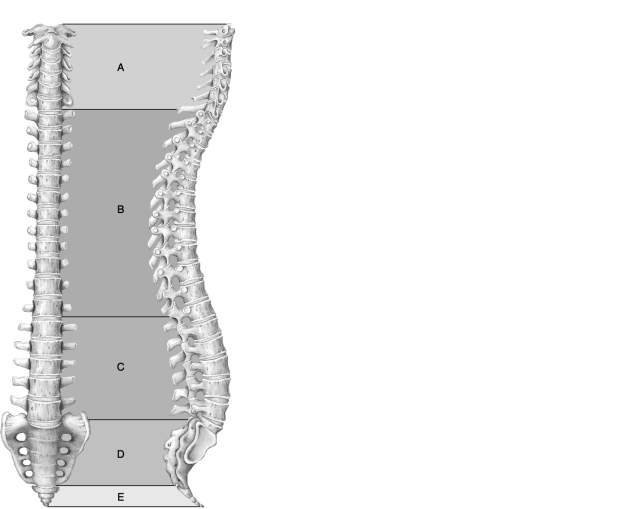 Figure 7.1
Figure 7.1Using Figure 7.1, match the following:
Contains the joint that allows you to rotate your head "no."

Unlock Deck
Unlock for access to all 102 flashcards in this deck.
Unlock Deck
k this deck
64
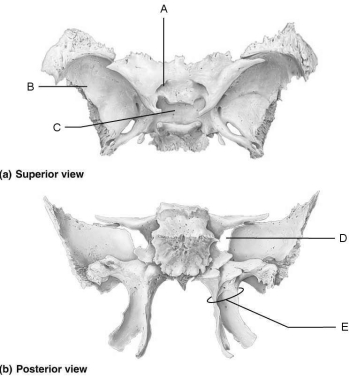 Figure 7.2Using Figure 7.2, match the following:
Figure 7.2Using Figure 7.2, match the following:Anchor the pterygoid muscles.

Unlock Deck
Unlock for access to all 102 flashcards in this deck.
Unlock Deck
k this deck
65
Your "cheekbone" is mostly formed from the bone.

Unlock Deck
Unlock for access to all 102 flashcards in this deck.
Unlock Deck
k this deck
66
The temporal bone connects to the zygomatic bone via the temporal process of the temporal bone.

Unlock Deck
Unlock for access to all 102 flashcards in this deck.
Unlock Deck
k this deck
67
Why is the area just distal to the tubercles of the humerus called the surgical neck?

Unlock Deck
Unlock for access to all 102 flashcards in this deck.
Unlock Deck
k this deck
68
Identify the arches of the foot and describe how they are maintained.

Unlock Deck
Unlock for access to all 102 flashcards in this deck.
Unlock Deck
k this deck
69
 Figure 7.1
Figure 7.1Using Figure 7.1, match the following:
What is the purpose of the vertebral curvatures?

Unlock Deck
Unlock for access to all 102 flashcards in this deck.
Unlock Deck
k this deck
70
The vomer forms part of the nasal septum.

Unlock Deck
Unlock for access to all 102 flashcards in this deck.
Unlock Deck
k this deck
71
The layman's name for the scapula is the collarbone.

Unlock Deck
Unlock for access to all 102 flashcards in this deck.
Unlock Deck
k this deck
72
The dens articulates with the axis.

Unlock Deck
Unlock for access to all 102 flashcards in this deck.
Unlock Deck
k this deck
73
The ischium articulates with both the ilium and the pubis.

Unlock Deck
Unlock for access to all 102 flashcards in this deck.
Unlock Deck
k this deck
74
What is the function of the lumbar curvature?

Unlock Deck
Unlock for access to all 102 flashcards in this deck.
Unlock Deck
k this deck
75
The tubercle of a rib articulates with the transverse process of a vertebra.

Unlock Deck
Unlock for access to all 102 flashcards in this deck.
Unlock Deck
k this deck
76
The largest and strongest bone of the face is the maxilla.

Unlock Deck
Unlock for access to all 102 flashcards in this deck.
Unlock Deck
k this deck
77
Body weight is carried primarily by the talus and calcaneus.

Unlock Deck
Unlock for access to all 102 flashcards in this deck.
Unlock Deck
k this deck
78
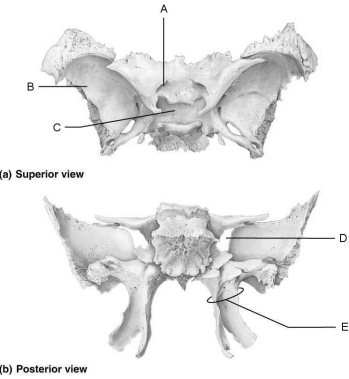 Figure 7.2Using Figure 7.2, match the following:
Figure 7.2Using Figure 7.2, match the following:Allow cranial nerves that control eye movements to enter the orbit.

Unlock Deck
Unlock for access to all 102 flashcards in this deck.
Unlock Deck
k this deck
79
The most common site of fracture in the humerus is the anatomical neck.

Unlock Deck
Unlock for access to all 102 flashcards in this deck.
Unlock Deck
k this deck
80
 Figure 7.2Using Figure 7.2, match the following:
Figure 7.2Using Figure 7.2, match the following:What are the fontanelles and what advantages do they confer on the fetus? The mother?

Unlock Deck
Unlock for access to all 102 flashcards in this deck.
Unlock Deck
k this deck



